Learn to manage your PPC campaigns like a pro for less wasted ad budget and the best possible return on ad spend (ROAS).
Here, you’ll find:
- A complete guide to creating effective PPC campaigns
- How to learn from your competition’s ad ideas (and traffic)
- Pro tips for testing and analyzing ad campaigns
- Optimization strategies for budget management
Pay-per-click advertising (PPC) can often feel like the ultimate high-risk, high-reward gamble. Between competitors, algorithms, and changing audience preferences, there’s always an element of chance.
Of course, minimal ad spend can bring in meaningful conversions when done right. But if your ads aren’t set up correctly, the only limit to the money you can lose is the budget cap you set.
Luckily, when you’re making data-backed decisions to optimize marketing campaigns for maximum reach and conversion potential, this type of search engine marketing doesn’t have to feel like a high-stakes risk.
Let’s put all our cards on the table. Here’s how to manage your PPC campaigns like the experts.
The elements of a strong PPC campaign
Poor PPC campaigns may involve a brand creating catchy ads and pointing them at an ecommerce product page or generic home page. Essentially, it’s like throwing money into a fire pit and seeing what happens.
PPC is an effective enough marketing strategy that this can work, but it’s hugely inefficient for brands that could otherwise make a killing with well-designed PPC ads.
Successful PPC campaign management involves:
- careful planning
- accurate analytics
- deep knowledge of your potential customers
Whether you’re leveraging Google Ads or an alternative search engine platform like Bing, you want to know how your audience thinks, what they want, and what they had for breakfast. (OK, you don’t necessarily need to know your customers’ dining habits – unless you’re a food and beverage marketer! – but the more you know about them, the better off you’ll be.)
So, what are the critical elements of good PPC campaigns?
1. Target keywords
First up are the keywords.
Whether you’re leveraging Google Ads or an alternative search engine like Bing, most PPC advertising platforms run primarily off keywords. It’s also worth noting that some (like social media and Facebook Ads) make user targeting and demographics more critical than keyword targeting.
Choosing relevant keywords means knowing what your target audience is searching for — in what search terms, and how you can reach them through that topic.

Here’s a crash course on keyword research if you want to learn more — and our guide to negative keywords to block specific keywords that drain your budget.
2. Targeting options
Many (though not all) online advertising networks allow you to use some degree of additional user targeting.
Targeting can be as simple as “users who visited your website in the last 90 days,” or as complex as “users with a low six-figure income level, who are married with a child under 10, live in the southeastern U.S., eat out 1-3 times per week, and have Netflix subscriptions.”
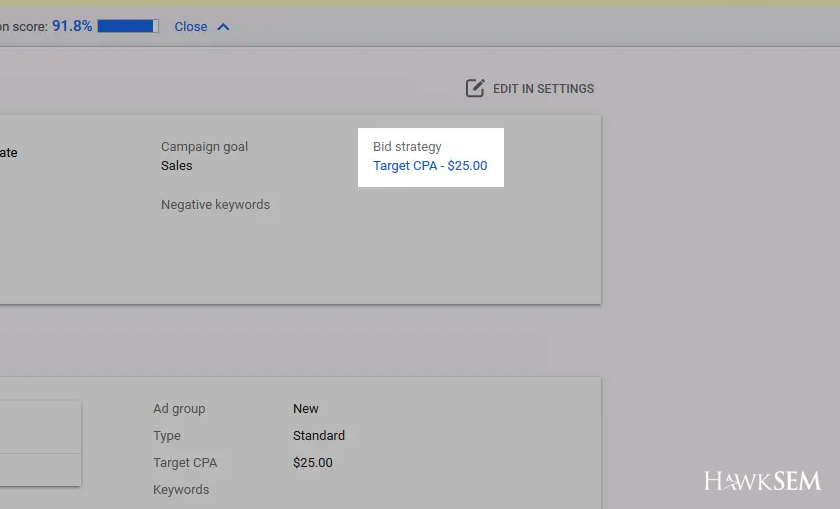
As you can see, this can get pretty granular.
The more specific you are with your targeting, the more closely you can align your message with the searcher’s needs, interests, and desires. It’s the difference between standing on a street corner shouting about your product and pitching it in one-on-one meetings with interested, high-intent leads.
3. User intent
Speaking of intent: Keywords and user descriptions are part of PPC, but one of the most often overlooked (and yet most important) aspects of PPC campaigns is the user’s intent in searching.
Consider this: a user enters a search query for “car insurance.”
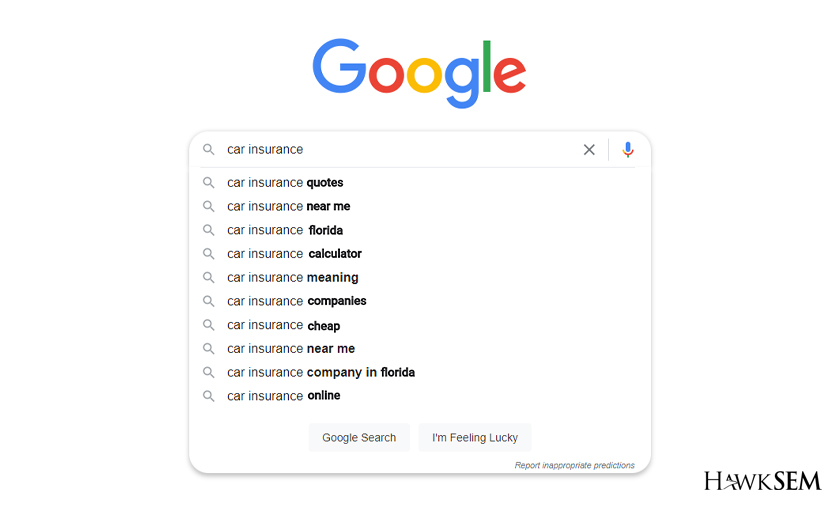
What kind of content do they want to see?
- Informational: They may want to understand car insurance better and how it works.
- Navigational: They want to visit their insurance provider’s website (and know the Google search engine results page or Google Ads will pull up their website with a brand search).
- Commercial: Perhaps they want to compare the most popular car insurance companies in their area.
- Transactional: They’re ready to sign up or change insurance providers.
It’s impossible to guess this intent on a super-generic keyword like “car insurance,” but long-tail keywords have more defined user intent.
A deep understanding of your user intent allows you to tailor your messaging and landing page to those with that intent.
Pro tip: If a good keyword has multiple intent forms, you can use different keyword matching types (such as exact match) to ensure a closer alignment of keywords and messaging.
4. Landing pages
Every ad has to point somewhere, and 99.9% of the time, that somewhere should be a landing page.
You know who the user is, what their intent is with their search, and how you can satisfy that intent. So, create a landing page that meets all those points as closely as possible.
This landing page presents a unique value proposition, helps assuage the visitor’s fears, and leads them to a call to action that encourages conversion.
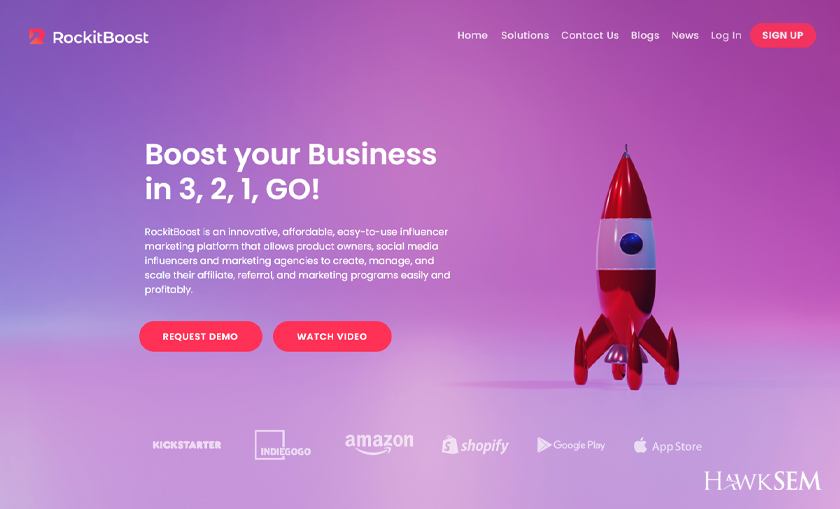
That conversion can be a newsletter opt-in, a purchase, a free trial, or something in between.
Pro tip: Even the most well-optimized PPC campaigns will suffer if your landing page design is sub-optimal. We created the ultimate guide to landing page design so you can build the best possible landing pages for your pay-per-click campaigns.
5. The ad itself
The ad, of course, is a hugely important part of your PPC marketing campaigns. Ad copy is, in some ways, the most important part of your ad campaigns.
Any good campaign will have many ad variations, A/B testing different versions of your headline, your body copy, your call to action, your value proposition, ad extensions, and more. Trying those ad variations to see how they perform (and why) is crucial — we’ll get to it in a moment.
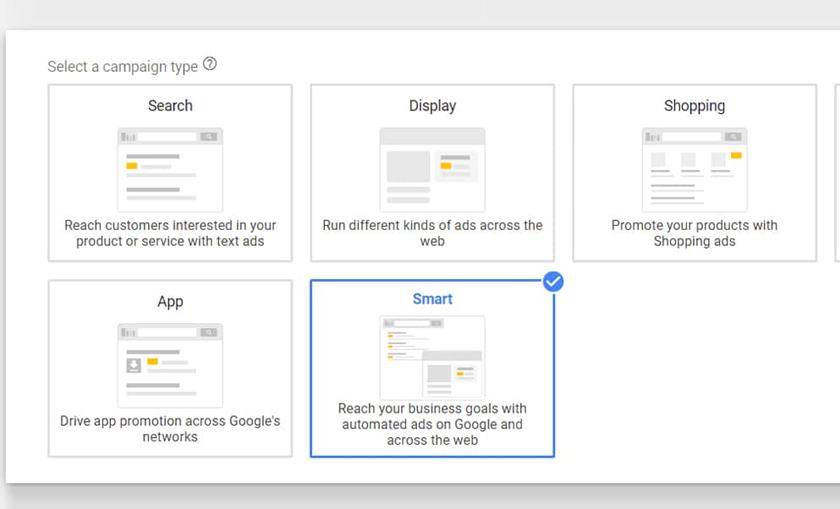
There’s also your ad format. Google Ads, for example, has many different types of ads, from remarketing or retargeting to product listings to display ads. If you haven’t already, it’s a good idea to start testing multiple ad types to see if you’re leaving conversions on the table.
Some ad types can manage a lot of the heavy lifting for you. For example, Google Responsive Search Ads (RSAs) enable you to provide many headline and description variations, and they’ll automatically test combinations to see which has the best campaign performance. (You can read more about Responsive Search Ads in our recent RSA guide.)
6. Results
Search ads need ongoing management. Keywords are constantly shifting in search volume and value, and variations that may be profitable today might not be worthwhile tomorrow.

PPC metrics to monitor include:
- Conversion rate: Your cost-per-conversion metrics are constantly in flux, and it’s not uncommon for your best performers to atrophy if left unattended for long. Conversion rate can be influenced by your landing page, but it can also fluctuate from avoidable circumstances like a loss in search volume or an increase in competition. Learn more about HawkSEM’s unique formula for maximizing conversions, dubbed ConversionIQ.
- CTR: Your ad copy typically influences click-through rates (CTR), and it’s a good idea to create ad copy variations to see which is most appealing to visitors. A drop (or rise) in CTR can also result from competition, budget, or user experience metrics like your Quality Score. We’ll discuss these in more detail in a bit.
- Quality Score and ad rank: On Google Ads, the Quality Score algorithm greatly influences your ad performance, cost, and CTR. A drop in ad rank means you’re no longer performing as well as competing ads. This could indicate a problem with your landing page or suggest that your competitors are outbidding you. We’ve got an article that breaks down how to find your Quality Score and how it influences ad performance.
- Budget: Ad groups may not be using your entire budget, or they could be limited by the low budget you set. Other ads might be using more budget than you anticipated and are hogging funds that could be better used on your other ads.
- Clicks and cost per click: Clicks are the core of paid search campaigns. They’re what will drive people to your landing page – or drain your budget if you’re not targeting properly. Keep an eye on any click trends you see, like which ads are bringing the highest quality traffic. On that same note, cost per click will offer insight into your competition, keywords, and how your bids are tracking.
Leverage competitive intelligence
You’re not alone in using a PPC network to reach your audience. Your competitors are right there beside you, fighting for the attention of the same audiences and the exact keywords.

You can compete in traditional ways, of course. It’s a time-honored tradition to undercut the competition as much as possible, promote how much better your customer service is, or showcase the awards you’ve won.
What if you could watch your competitors and learn from their techniques? Or, at the very least, see that they’re using disorganized campaigns and poor optimization, so you can write off most of what they’re doing and learn from their biggest wins and losses.
You can do precisely that with competitive analysis.
Competitive analysis is tricky because you can gather tons of data on search engine keywords, budgets, targeting, and more. At the same time, you can never fully trust what you find because no one you get the information from has complete access to the competition.
Most search engine optimization (SEO) tools provide enhanced estimates with machine learning, keyword groups, and annual averages. They can get pretty close, but the SEO software estimates rarely match the real numbers.
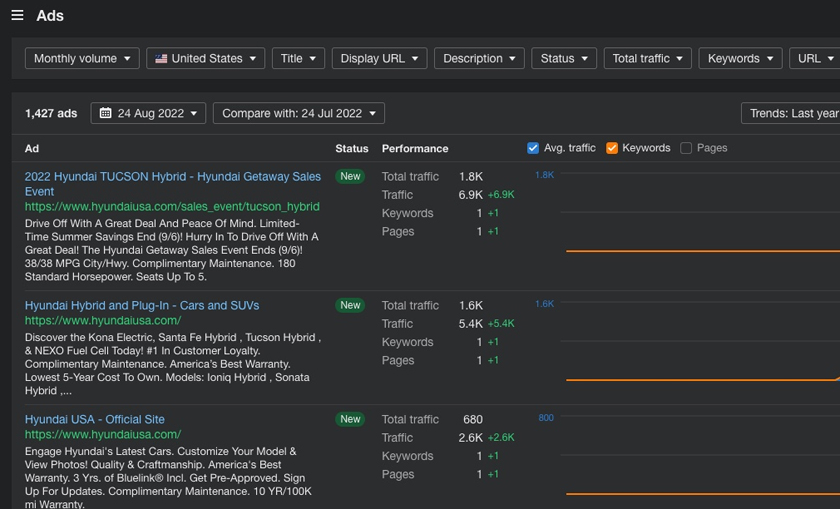
Keyword lists are helpful, but be cautious of comparing budget numbers since they’ll all be estimates.
The three keys of competitive analysis are:
- Understand who your real competition is. The businesses you think are your direct competition might be a lot bigger or a lot smaller than you think. Plus, there may be other competitors out there you weren’t aware existed.
- Know what your competition is doing. Are they putting a token effort into PPC? Maybe they’re broad-targeting a massive list of keywords and wasting money? Are they trying out unorthodox keywords or testing something unusual?
- Know where they’re putting their focus. Identifying the keywords and messaging your competition uses can show you, for example, if they’ve chosen a particular pain point to drill into, a specific value proposition to push, or a particular audience segment. It can give you insight into their business and inspire ideas for your own.
You can either try to compete, undercut their other efforts or otherwise navigate around their actions.
Larger campaigns can have hundreds — or even thousands — of ads, and managing those accounts can require a team of professionals to ensure that your ad spend is being spent appropriately. (We’ve helped companies from Verizon Digital Media to California State University, Northridge do just that.)
Testing ads & analyzing performance
The secret to successful PPC isn’t getting the keywords right, nailing the targeting, or getting lucky with the timing of your ads. It’s all about testing, testing, testing.
Proper testing means you pick variables, make changes to them, and analyze the results of the variations in the ads.
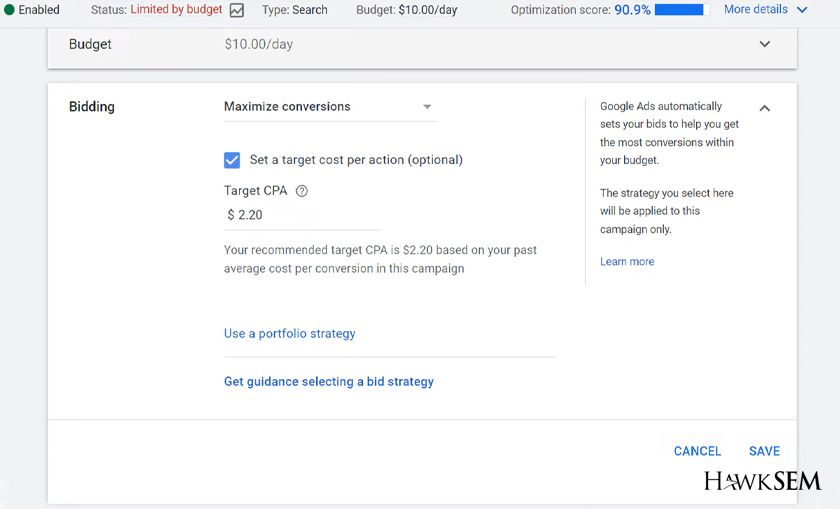
The key is to be scientific. That means:
- Change only one variable at a time. If you change the title and the offer on an ad and test it, and it performs better, was it the title or the suggestion that worked better? You have no way of knowing unless you have four variations, one with each possible combination.
- Keep budgets, timing, and traffic volumes organized and reasonable. You want to compare apples to apples. If one ad variation has $100 a day behind it and another only has $15, that ad probably has more traffic volume than the other. You should give your ad variations enough budget to compete and give them a fair test.
- Run tests long enough for statistical significance. If your ads don’t run long enough, get enough traffic, or spend enough budget, you can’t make meaningful decisions based on that ad data when the margin for error makes it meaningless.
When you test new ad variations, you can harvest data about user behaviors, including how they respond to different offers. Be sure to pay special attention to what part of the process has the most significant drop-off.
It’s possible the key to optimizing your search engine marketing ads is actually reorganizing your landing page and making your CTA clearer.
Picking & optimizing your bids
A considerable part of PPC management is managing, bidding, and optimizing your PPC strategy.
Sure, companies like Google offer automated bidding and optimization using machine learning, which can work reasonably well. But the highest performing PPC campaigns should have a balanced blend of automated technology and talented PPC experts.
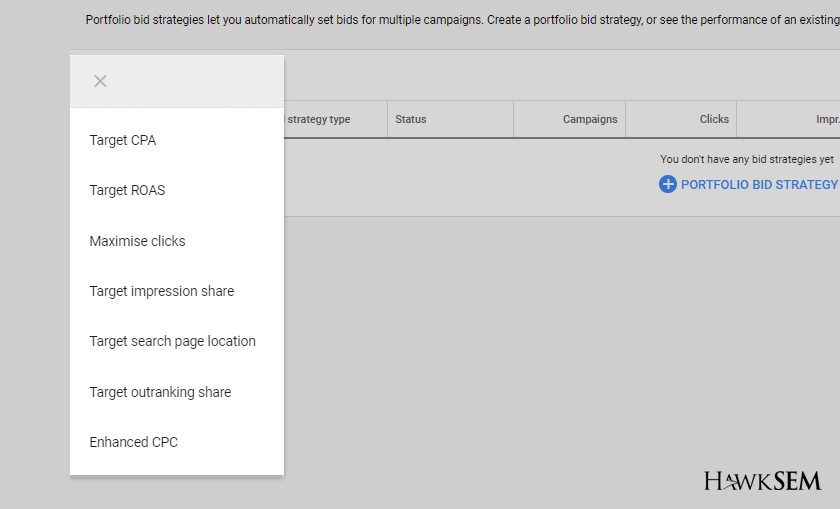
PPC needs money to function, no matter what. The best thing you can hope for is to maximize the value you get from the money you spend.
Luckily, there are plenty of knobs to tune to set things right.
- Should you pay for views, clicks, or conversions? A CPC (cost per click) strategy means you’re only getting charged for clicks. Views/impressions are free, but clicks that don’t result in conversions are costly. Paying for visitors has the potential to bring in a considerable amount of traffic. But if no one converts, you get nothing out of it. Paying for conversions means you have a guaranteed return, but it can be the most expensive SEM strategy. All three methods have their role.
- At the same time, what metric should you optimize for? Do you want to get more views, focus on lead generation, improve brand awareness, or increase conversions? Different paid search campaigns can have different goals, and the goal isn’t necessarily reflected in the bidding strategy.
- Don’t forget bidding caps on per-ad and per-campaign bases. Per-ad limits prevent overly-expensive click and conversion auctions from draining your budget. Per-campaign caps help you avoid overrunning your total budget. Nothing is as disheartening as leaving an ad uncapped and accidentally spending a whole month’s budget in a week.
- Bidding strategies vary from platform to platform, as do the nuances of how you can use them. The options available and their pros and cons will differ between Facebook, Google, Microsoft, and other platforms like Taboola, Bidvertiser, or Clicksor.
It’s worth digging into specific resources for each ad network when you want to use them.
The takeaway
Successfully managing PPC campaigns is a complex juggling act with dozens of balls in the air at any given time.
That means dropping any of those balls can result in wasted time or delayed ROI, neither of which benefits your goals or your business.
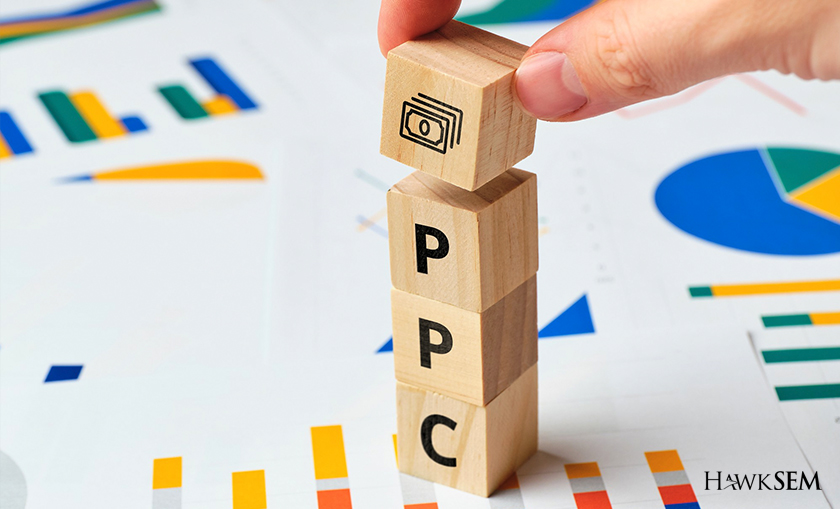
Whether you’re just stepping into the waters of PPC or a seasoned marketer looking to refresh your knowledge of best practices, our blog is packed full of resources for you to learn pretty much anything you want to know.
And if you’re looking for something specific and we haven’t covered it? Feel free to drop us a line.
If keeping track of everything that goes into PPC is too much with all the other daily duties you have on your plate, let us know. We’re experts in all things digital marketing and would love to hear about your advertising challenges. Let’s talk.

